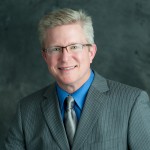If you’re considering breast augmentation, chances are you have a lot of questions about what your recovery will look like. How uncomfortable will you be? How much time will you need to take off of work?
Breast augmentation has been around since the 1960s. In the decades since, the associated recovery has typically involved narcotic pain medications, confining bandages, limited movement of the arms for days or weeks after surgery and sometimes even drains. While you may personally know someone who experienced a recovery along those lines, the good news is you don’t have to.
In his Indianapolis practice, Dr. Bruce Van Natta offers rapid recovery breast augmentation, a post-surgical treatment plan that was first pioneered by his friend and fellow plastic surgeon Dr. John B. Tebbetts in the 80’s and 90’s. When Dr. Van Natta informs his patients that they will be back to work and regular activities the day after surgery, he is often met with some initial disbelief. After all, it sounds too good to be true, doesn’t it?
“I get a lot of push back skepticism from patients, and I get it, because I’m skeptical,” says Van Natta. “If you follow this program, you can actually get back to your life: taking care of your kids, get back to work, all those things. We’ve been doing this for twenty years now, and it works.”
Size Matters
Recovery discomfort and implant size go hand-in-hand, shares Van Natta. The larger the implant is, the more your chest muscles and tissues will be stretched to accommodate the implant. To reduce post-surgical discomfort, he recommends sticking with an implant that fits nicely within your chest measurements, without going too large.
“First of all, in breast augmentation, I won’t put an oversized implant in. That’s imperative,” says Van Natta. “If your surgeon is putting in a great big implant, I’m not sure any recovery is going to be that rapid because of the pain.”
Say No to (Narcotic) Drugs
After surgery, Dr. Van Natta’s breast augmentation patients are prescribed 800 milligrams of Ibuprofen to be taken every eight hours for the first five days. Ibuprofen helps relieve muscle stiffness without the many negative side effects associated with stronger narcotic drugs such as Vicodin and Norco.
When patients take narcotic pain relievers following breast surgery, they usually end up sleeping most of the day and night, hardly moving or changing position. When they do begin to move around several days later, they find themselves extremely stiff and sore and in need of more medication.
“Nothing good comes from narcotics,” stresses Van Natta. In fact, these commonly prescribed narcotics also tend to leave patients feeling nauseous and constipated as well as sluggish.
Negative Side Effects of Narcotics:
- Nausea or Vomiting
- Constipation
- Sedation or sluggishness
Stretch It Out
“Technically, the surgery is exactly what anyone else would be doing,” says Van Natta of the rapid recovery breast augmentation. “It’s the aftercare that’s key.”
When the surgery is complete, the patient is sent home to take a two hour nap. Following a nap and the first dose of Ibuprofen, a shower is next on the agenda. From that point on, they are instructed to complete a series of over-head arm stretches every waking hour. This continuous use of arm and chest muscles prevents patients from experiencing the stiffness and pain associated with traditional breast augmentation recovery.
The very same day of surgery, Van Natta’s patients are encouraged to go shopping, go out to dinner, open the car door on their own and even brush their own hair.
“It’s just like after you’ve worked out,” explains Van Natta. “If you don’t stretch that muscle, it gets sore, stiff and painful. If you continue to not move or stretch, that pain snowballs. That’s exactly what’s happening when surgeons bind patients up and tell them to take it easy and don’t lift their arms. It’s crazy. They need to stretch.”
While he does ask patients to refrain from doing any push-ups or other similarly strenuous chest muscle activities, all other regular day-to-day activities are fair game. Many of his patients return to work the very next day.
Why Don’t More Surgeons Offer Rapid Recovery?
There are still some surgeons who prefer a more lengthy, traditional breast augmentation recovery. Instead of instructing their patients to stretch out the chest muscles, they limit arm and muscle motion in the days and weeks following surgery. “A lot of surgeons are afraid the stretching and movement will stir up bleeding. Well, we do two hundred breast augmentations a year, and no one bleeds from it,” points out Van Natta. “Clearly, it is safe.”
Van Natta believes some surgeons stick to the old recovery methods simply because it is the way they have always done it, and it works for them. He urges all surgeons to take a closer look at the data and to instead consider how much better a rapid recovery would be for the patient.


















Facebook
Twitter
Instagram
YouTube
RSS